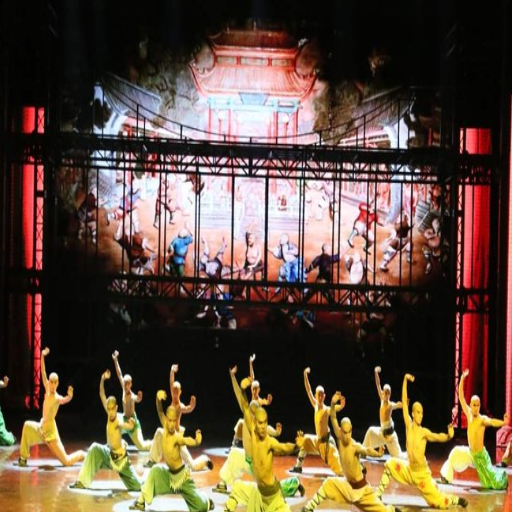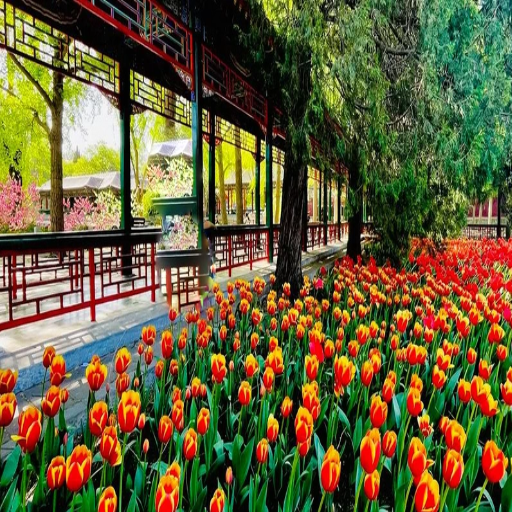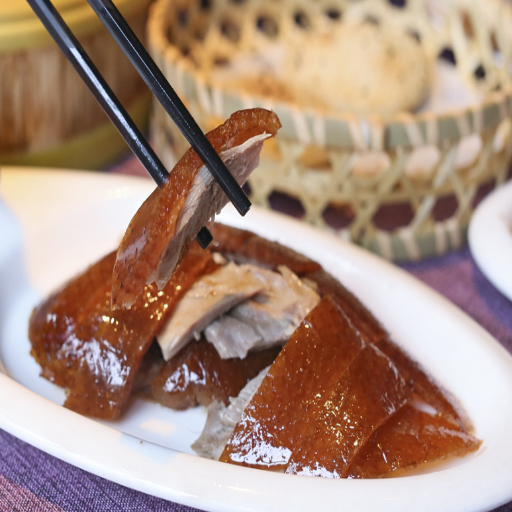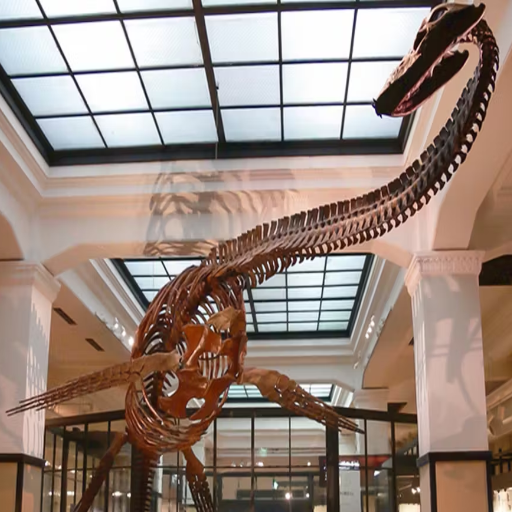Beijing marks the capital of China and is a busy yet stunning city notable for its blend of state-of-the-art construction alongside ancient relics. Beijing is certainly not short of offerings to keep new and returning tourists entertained- this guide walks you through the famous and not-so-famous attractions that have painted the masterpiece of Beijing. The city is home to many culturally and historically significant locations, such as the Great Wall and the Forbidden City, in addition to stunningly charming hutong alleyways, all brimming with life. China is rich in heritage and cuisines, so prepare to be engulfed with the unique metropolitan experience China has to offer. Your adventure starts now!
What are the top attractions in Beijing?

The Forbidden City Decoded
Also known as the Palace Museum, The Forbidden City is an ancient structural wonder and a glimpse into China’s imperial history. It was built during the Ming Dynasty’s early 15th century and has functioned as an emperor’s palace and a political hub for over 500 years. Spanning 180 acres, this UNESCO World Heritage Site contains more than 980 constructions and over 8700 rooms, making it one of the world’s largest and best-preserved ancient palace complexes.
When they step through the grand Meridian Gate, visitors enter a fantastic world of exquisite ceremonious halls, courtyards, and very ornate details. This is home to many famous subcomplexes, including the Hall of Supreme Harmony, where the genial imperial throne ceremonies were held, and the eye-popping, elaborately decorated Imperial Garden. Aside from the architectural beauty, the Forbidden City showcases many insights into Chinese traditional forms and design, lavish artistry, and symbolic elements used in the architecture to express cultural meaning.
Even today, the stunning history and beauty of the Forbidden City draws millions of visitors each year. With the added modern features of multilingual guided tours and museums displaying ancient artifacts, travelers can now more than ever appreciate and understand the deep heritage of China’s imperial legacy.
Exploring the Great Wall of China
Wrapping over 13,000 miles, the Great Wall of China is a beautiful structure over Chang Cheng Mountain. It showcases the resilience, importance, and architectural achievement of fortifications built during ancient Chinese civilization. While initially built to protect against invasions, now it’s a place of cultural importance that connects various nations—both physically and emotionally.
Boasting stunning watchtowers, the Mutianyu section sits well-preserved along with the greenery, making it perfect for casual hikers, families, or anyone interested in exploring and looking for rugged adventures. Then, the Simatai section will serve you well while providing untamed historical views alongside breathtaking landscapes. While modern enhancements like visitor centers, cable cars, and other aids, exploring the Great Wall also provides a chance to experience some of the best landscapes in Asia.
Exploring Tiananmen Square
With an astonishing expanse of more than 4 million square feet, Tiananmen Square is one of the largest public squares in the world. It is located right in the center of Beijing. Sightseeing locations like the National Museum of China, the Great Hall of the People, and the Tiananmen Gate (Gate of Heavenly Peace) stand majestically bordering this historic and symbolic landmark. The square is geographically Central China and hence contains the Mausoleum of Chairman Mao at the center which is highly revered and visited by people trying to seek homage to one of the most influential historical figures of China.
Mounting celebrations, public protests, and gatherings have made the square encounter some of the most pivotal events in Chinese history. It serves as a theme park for people’s expression. In addition, the controversy behind the events of Tiananmen Square has made it a symbolic focal point of modern Chinese history. Tiananmen Square becomes a blend of modern exertions of China’s richly infused cultural identity while symbolically becoming a historical peak.
What cultural experiences can you have in Beijing?

Experiencing The Temple of Heaven
Temple of Heaven, located in Beijing, is an extraordinary blend of ancient spiritual Chinese culture and architectural finesse. This magnificent structure, built during the Ming dynasty (in the 1400s), is considered a sacred ground and a temple of worship for emperors who wished good harvests and bountiful wealth. The entire site covers an area of 2.73 square kilometers and contains an abundance of gardens, altars, and architectural structures that reflect the heavenly order.
The Hall of Prayer for Good Harvests’ circular shape and blue-tiled roof capture the eyes and symbolize the heavens. The architectural marvel Echo Wall allows a whispered voice to be heard clearly throughout the perimeter. The Temple of Heaven is more than just a historic site. It is rich with cultural heritage that many people still connect with. In the early mornings, locals take tai chi lessons or play musical instruments, which offers tourists a glimpse into the life of a Beijinger. The Site is a testament to China’s mixed spirituality and artistry blended with history. The Temple of Heaven serves as a prominent wonder of the region.
Touring the Lama Temple
The Lama or Yonghe Temple is one of Beijing’s most magnificent religious sites, showcasing a combination of rituals from the Han Chinese and Tibet. This Temple is a remarkable piece of Tibetan Buddhist art. It has been carved magnificently, and every single detail is outstanding. With five decorated halls, which possess accurate carvings and marvelous statues, it allows a vision of the rich culture of Tibet Buddhism. Finely painted murals representing holy Tibetan Buddhism add to the beauty of the castle.
Visitors can praise the Maitreya Buddha statue, symbolizing peace and prosperity. The statue is 18 meters tall and cut from a piece of white sandalwood. Another essential section of the Lame Temple that attracts tourists is the Hall of Harmony and Peace. Monks still chant sacred spells there. Along with the serenity, the ancient cypress also brings charm, making it a temple worth visiting. The tranquility felt there, along with the serene environment, makes it one of the best temples in the world. It’s a perfect site to explore history and art complemented by vivid depictions of faith that mesmerize those who travel.
Retracing the steps back through the Hutong Alleyways
The Hutong alleyways stand out because of their unique shape, which resembles a maze. The plethora of siheyuans are courtyards full of families that have lived there since centuries ago. Rich in history, the Hutong goes as far back as the Yuan Dynasty and has become a symbol of Chinese civilization. Different parts of the Hutong are named after landmarks or places China has historical stories about. Just Imagine walking around and having the feeling of blending the city with the nostalgia of the past.
Not only are the Hutongs considered ancient, but they are well preserved and have vibrant colors. The Chinese Hutongs have small eateries, traditional tea shops, art galleries, cafes, and small boutique stores. The alley nanluoguxiang is the most prominent and loved by tourists to experience a well-preserved yet modernized hutong. Travelers can enjoy street food while relaxing along beautifully shaped courtyards and locally crafted souvenirs. Each corner holds a story, making these alleyways a dynamic reflection of Beijing’s evolving culture.
Less frequented Hubangs offer an escape from the commotion that allows visitors to experience local rhythms and the region’s tranquility. Locals sitting around their homes having candid conversations, playing chess, and rickshaws smoothly gliding through the alleys create a lively atmosphere. Besides rich framed doors representing a very high social standing, these alleys exhibit exquisite architectural craftsmanship. The heritage and beauty of these Hutongs are maintained through guided walking and cycling tours enriched with fascinating historical information.
What are the best parks and gardens to visit in Beijing?

Resting at Beihai Park
Combined with history, culture, and flora, Beihai Park is a remarkable landmark preserved through time. The day-to-day activities of the people residing in the city are often bustling, but in this park, they can sit back, relax, and forget about their busy lives. It is one of the oldest parks in Beijing, covering over 69 hectares. Moreover, Beihai Lake is present within the park. This stupa is surrounded by exotic scenery and gives a breathtaking view of the White Dagoba.
The park enables its visitors to practice tai chi and play instruments with friendly locals while also allowing them to capture the beauty of nature. With all these engaging activities, the park also provides solitude, making it a perfect space for a hike. The change of weather also adds to its beauty. It is often filled with cherry blossoms in spring, while in autumn, the leaves change to an orange tone.
Strolling through Jingshan Park
Jingshan Park lies north of the Forbidden City, where you can find one of the most splendid historic imperial gardens that allows you to stare at the beautiful central view of Beijing. Jingshan Park contains what is considered to be the park’s central feature, that is, the 45-meter artificial hill that captures people’s attention. Made during the Ming dynasty using soil excavated from the forbidden city’s moat, the mountain is equipped with pavilions. The hill gives tourists a complete view of Beijing and even the Forbidden City’s drum tower.
Jingshan Park contains more than 23 hectares of vibrant gardens filled with beautiful flowers yearly. For instance, the peony garden that flourishes each spring and is filled with blossoms of striking colors. It also includes serene tree-covered spaces, allowing visitors to roam freely through Jingshan Park and learn about its significance as a former location for royals. The park is now where locals can be seen exercising in the morning, dancing alone, or even engaging in traditional opera. Arriving at the park too early might allow you to stare at the cultural blend in the city.
Appreciating The Beauty Of Summer Palace
The Summer Palace, or Yiheyuan, as it is known in Mandarin, is one of the most beautiful places in Beijing. It consists of palaces, gardens, and lakes, all meticulously constructed into a single 700-acre unit. As a UNESCO World Heritage Site, the Summer Palace is a treasured aesthetic asset, especially its Kunming Lake, the attractive centerpiece that accounts for three-quarters of the total area of the palace facilities. Elegant and scenic bridges and islands can be found throughout the lake.
Visitors can see the fantastic work of imperial China as they cross through the ornate pavilions, halls, and courtyards on top of Longevity Hill Lake. They will also be able to do so through The Long Corridor, a 700-meter-long covered walk with detailed paintings portraying Chinese folklore and history. Another picturesque method to admire the area is by taking a boat ride around Kunming Lake. The views from the lake are stunning, as you can see The Seventeen Arch Bridge, Tower of the Buddhist Incense, and other green landscapes.
This World Heritage site makes it convenient for tourists to explore culture while at the same time allowing nature lovers to appreciate nature. Its beauty and calmness are unlike any other, allowing visitors to admire and experience their heritage while seeking refuge from the city’s chaos.
Where can you find the best food in Beijing?

Trying Peking Duck
One of the must-try delicacies in Beijing today is Peking Duck, which is famous for having a crispy, shiny layer of skin with juicy meat waiting underneath. While most popular in modern times, this dish has been perfected over centuries of Chinese history. It is a masterpiece of culinary art. The duck is cooked in a special oven. As the skin becomes crunchy, the fat below melts, so the meat is tender and full of deep flavors.
Followed by a paper-thin pancake, spring onions, cucumber, and a combination of sweet hoisin or sweet bean sauce. Gourmet places like Quanjude and Da Dong focus on perfecting this with their traditional and innovative. Served alongside ritualistic cultural dining practices that heighten the experience. Enjoying the dish while it is still hot off the grill is undoubtedly recommended, as the chef’s skill and experience turn freshly roasted duck into a spectacular dish.
The Night Market at Wangfujing
The Wangfujing Night Market is vibrant with its culture, flavor, and activities. As one of the main attractions in Beijing, it’s an excellent mingling area for tourists and locals, crowning it “The Pearl of the North.” To no one’s surprise, Wangfujing Night Market offers unique street food such as lamb skewers and dumplings and more exotic fare like scorpions and starfish. Such variety highlights the adventurous spirit of China. The neon-illuminated food stalls and Wangfujing itself are remarkable highlights of the market.
The beauty of the market shines through during the evening hours when the vibrant atmosphere is at its peak. Currently, there’s an increase in foot traffic as locals and tourists stop by to indulge in street shopping. Besides gorging yourself on food, you can pick up knitting and treasure trinkets, perfect to take home as souvenirs or keepsakes. इन or either way, the Wangfujing Night Market is internationally renowned and offers something for people of all ages.
Tasting traditional foods in hutongs
Hutong Alleys have a rich history and are famous for traditional food in Beijing. You will find conventional family-owned restaurants, food stalls, and hidden cafes that highlight Beijing’s rich culture. You can try various dishes such as zhajiangmian (soybean paste noodles), steamed meat buns, and Peking duck wraps, all of which are part of Beijing’s rich gastronomy. There are also seasonal specialties that further highlight Hutong’s connection with nature.
While strolling through the Hutongs, the mouth-watering scent of barbequed skewers, hotpot, and steamed dumplings fills the air, enticing hungry visitors. Most of these dishes have time-honored recipes that tell the story of the city’s heritage. Nanluoguxiang is the best region for grabbing a meal-venture, where snack sellers and modern-day cafe bars serve a delicacy. You can even find modern inventions such as hawthorn ice cream and candied fruit skewers that locals and tourists enjoy because of their refreshing taste.
Dining in Hutongs is not only a unique culinary experience, but it is also rich in culture. The casual atmosphere, where conversations are held under their breath and laughter resonates in the narrow stone-encased alleys, turns every meal into a cultural festival. As you enjoy these local delicacies, allow yourself to be captivated by the charm of infinity, embracing the ancient life in Beijing and the fascinating old culture and architecture. If you want familiar flavors or a new experience, Hutongs will take you on a unique journey in a timeless culinary fusion of history and modernity. Remember to savor the magic of centuries-old Hutong architecture while you feast because the nostalgic beauty will amplify your experience.
What are some unique experiences in Beijing?

Going to galleries like 798 Art District
798 Art District is located in the Chaoyang District of Beijing, the sprawling district is home to a kaleidoscope of contemporary art, galleries, installations and studios. 798 housed an old state-run electronics complex, which is now home to an array of art pieces by both up-and-coming and established artists from China and all around the globe. The spirit of modern-day Beijing can be seen and felt in all exhibits and pieces. From multimedia exhibits to avant-garde pieces, based on your interest, 798 has something for everyone.
The rich art culture of China is coupled with stunning architecture at the 798 Art District. The preserved Bauhaus-style industrial architecture aesthetic with high ceilings, huge open areas, and a maze of interconnected warehouses is blended with modern creativity. These structures offer a unique setting for the artwork. Apart from the gallery spaces, the district contains ever-changing outdoor public art installations and street art, making the area a blank canvas. Like a museum, the rich culture is etched literally and non-l, and it is striking.
At 798, visitors can do more than appreciate art: it is a way of life. The area is perfect for a full-day trip and is filled with stylish performance spaces, trendy cafes, and boutique shops. There is always something new to experience or see because of regular art festivals, film screenings, and workshops. Whether you are an art lover or a curious tourist, the 798 Art District is one of the most dynamic places in Beijing and will surely leave you captivated by the creativity and energy in the city.
Experiencing The Night Life in Beijing
The first thing that comes to mind when I think about experiencing Beijing at night is how the mix of modernity and tradition comes to life. Walking in places like Houhai is delightful due to the calming atmosphere of its shimmering lakes, traditional buildings, and cozy bars. The atmosphere feels captivating and timeless due to the warm glow of lanterns, narrow alleyway live music, and soft humming. Those looking to have a more dynamic nightlife experience have places like Sanlitun that offer luxury rooftop lounges and energetic clubs that draw in locals and tourists alike.
Bijing’s iconic landmarks also attract many eyes at night. The National Centre for Performance Arts lights up magnificently, as does the Forbidden City. The area surrounding Wangfujing Street is also known for its street food markets, with adventurous items like Peking duck wrap and a lot of shopping. All of these stay open late into the night. Wangfujing Street is a perfect place to get immersed in the culture and enjoy the lively atmosphere at the same time.
I suggest visiting the Olympic Park at night for a calm yet jaw-dropping activity. The Bird’s Nest and Water Cube marvels of modern architecture in Beijing are further enhanced when illuminated with various colors at night. Beijing’s nighttime bike tours offer a unique opportunity to experience nearby landmarks. The cool breeze against your skin while taking in the glittering skyline of Beijing is a surreal experience. Regardless of your preferred nightlife activities, Beijing has a unique charm for blending culture, history, and dynamic energy, which one does not forget after experiencing its magical nights. These mesmerizing nights remain etched in one’s memories for a lifetime.
Exploring the National Museum
My visit to the National Museum of China was educational and insightful. I was welcomed with open, grand halls showcasing modern and historic architecture compiled under one roof. The collection of artifacts, such as ancient pottery, bronze relics, and jade carvings, is a sight for sore eyes. Each artifact reflects a different story and the core of China’s rich culture. My favorite part was the historic gallery, which features pieces from the Xia and Shang dynasties, showcasing relics that provide a peek into the deep roots of Chinese civilization.
What struck me most during my visit was the exhibit of ancient and modern artifacts in the same timeline, which I found astonishing. Aside from paying tribute to history, the museum also looked towards the future by including contemporary technology, art, and innovation in China. The use of digital installations and interactive displays further enhanced the dynamism and engagement of the experience, allowing me to comprehend the transformation of Chinese society throughout the centuries. With this, I was especially struck by the amalgamation of history, art, and technology and how they together illustrated the nation.
Equally captivating is the detail with which China’s great cultural diversity is represented. Every exhibit, from the cultures of ethnic minorities to major revolutionary events, captured many facets of the country’s identity. The staff and guided tours added a personal touch, and their comments about the artifacts enhanced the experience. When I finally left the museum, I felt deeply moved by the magnitude of history and culture so richly preserved within the walls of the National Museum.
Frequently Asked Questions (FAQs)
Q: What are the top things to do in Beijing for tourists?
A: When traveling to Beijing, you must visit the major venues. The Forbidden City, the largest palace complex in the world, and the Temple of Heaven Park are some of the must-see locations. Also, ensure you do not miss the Great Wall of China, especially the part of the Great Wall that is commonly visited near Beijing.
Q: What is the best time to visit Beijing?
A: In my opinion, Spring (April to May) and Autumn (September to October) are the best times to explore Beijing since the temperatures are mild and favorable for tourism and Sightseeing. This time is perfect for experiencing Beijing to its fullest without the discomfort caused by summer heat or winter chills.
Q: How can I travel around Beijing using public transport?
A: The subway is one of the easiest and most convenient public transport systems in Beijing. It is economical and fast, and many of the major attractions of Beijing, such as the Drum Tower and other parts of central Beijing, can be easily accessed from it.
Q: What unique cultural experiences can I have in Beijing?
A: Ancient hutongs are a must-visit to get a glimpse of traditional culture. For an even deeper understanding of the culture, visit an ancient tea house. Do not forget to taste the street food. Scorpion on a Stick is a childhood favorite of many children in Beijing.
Q: Where should I stay in Beijing to be close to major attractions?
A: It is ideal for tourists to stay in central Beijing. The area around Wangfujing and The Forbidden City is very touristy and has a lot of things to do. Because of its location, these hotels are easily accessible to a number of places. From lavish hotels to traditional courtyard guesthouses, many different types of accommodation are available.
Q: Is there a recommended day trip from Beijing?
A: Most people like to visit the Great Wall of China, which, in my opinion, is the most beautiful part of China, especially the Mutianyu section, which is often less crowded. Such places are an absolute must-visit in Beijing.
Q: What historical sites should I not miss in Beijing?
A: For me, the most important are the Ming Tombs, the Temple of Heaven Park, and the Forbidden City. This imperial history of China is so beautiful and vibrant that it is a must for each trip to Beijing.
Q: What are some lesser-known spots around Beijing worth visiting?
A: You may also like to explore the White Dagoba in Beihai Park and the 798 Art District for a different view of the city. These places have the charm of old Beijing blended with modern Chinese art, offering something fresh other than the usual tourist destinations.
Q: How can I experience the legacy of the Beijing 2008 Olympics?
A: You can start your exploration from the Beijing National Stadium, affectionately known as the Bird’s Nest, alongside the Water Cube. These remarkable remains were constructed during the Beijing 2008 Olympics and serve as a reminder of what the city has achieved and its standing in the world.